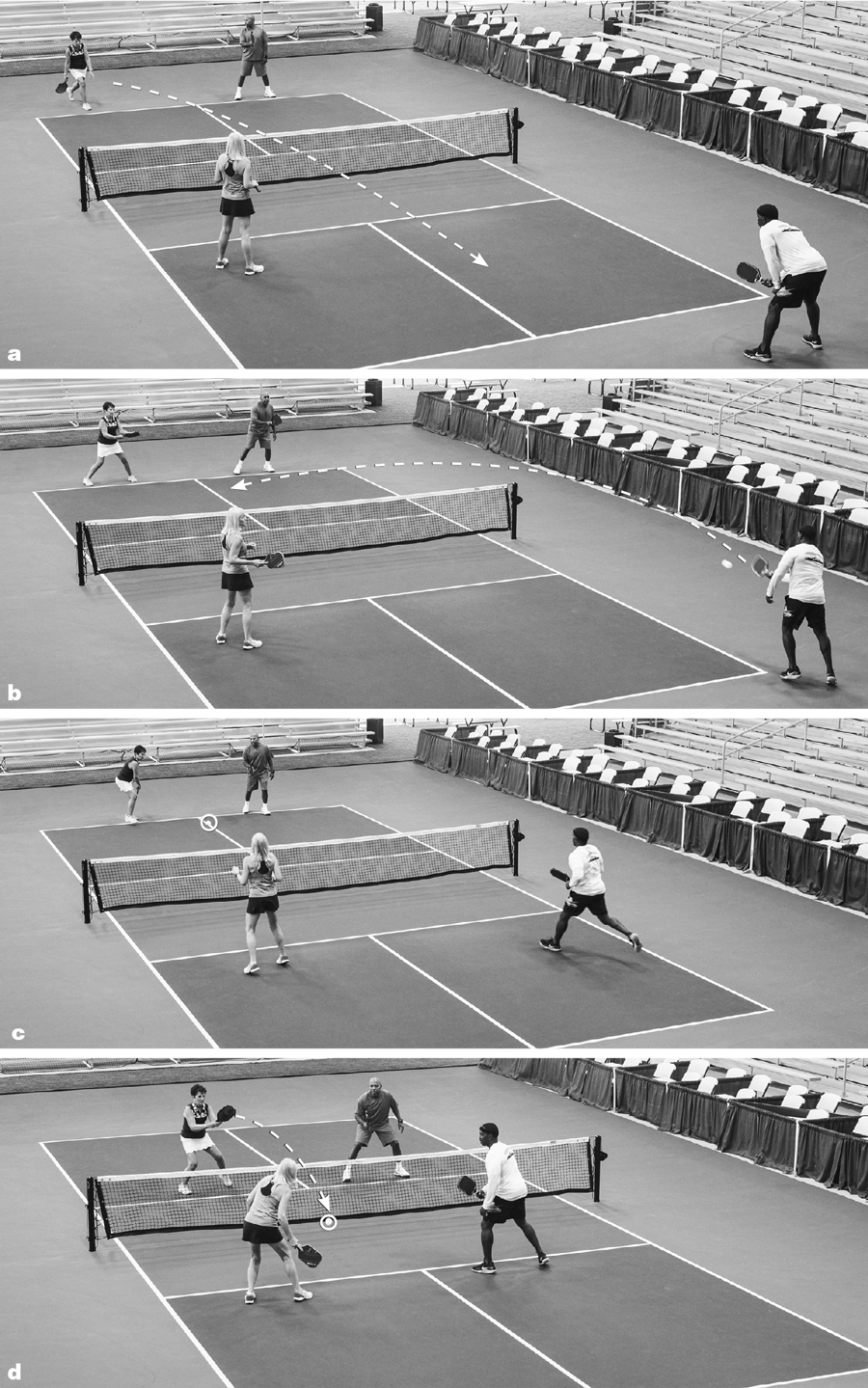Using the Dink in Game Play
This is an excerpt from Pickleball Fundamentals-2nd Edition by .
In the “total doubles” game, a player and a partner stand behind their baseline. The ball travels over the net and lands deep in the service court diagonally across from the server. One player on the receiving team is positioned deep to return the serve, and the other stands behind the NVZ line (figure 6.3a). Immediately after the serve is returned, the receiver begins to advance forward to a position side by side with the partner (6.3b). The rate of advancement is based on the mobility and speed of each returner, with the focus being on balanced movement toward the NVZ. Once both players are positioned at the NVS, the receiving team is in a strong offensive position at the net and the serving team is deep in their court waiting for the ball to bounce before they can return it (6.3c).
The serving team’s goal is to return the ball with one of the various shots (a drop, a drive, or a lob, for example) that allows them the opportunity to follow up their shot to the net. Assuming they are successful, both teams are in position at the net to either volley or dink the ball (6.3d).
A rally continues until one team has committed a fault, usually by hitting their shot short (into the net) or out of bounds (either too long or too wide), landing outside the court boundary. This fault may happen when one team gains an advantage and is able to put the ball away by hitting it angled down with force, out of the opponent’s reach, or by a player trying to keep a dink too low and hitting it into the net. Other common faults are entering the NVZ on a volley, allowing the ball to contact your body or non-paddle hand, or letting the ball bounce twice before it is hit. Depending on which team won the rally and which player—first or second server—was serving, it’s a point, second serve, or side out (meaning that the ball goes to the opposing team for their first serve).

SHOP

Get the latest insights with regular newsletters, plus periodic product information and special insider offers.
JOIN NOW


